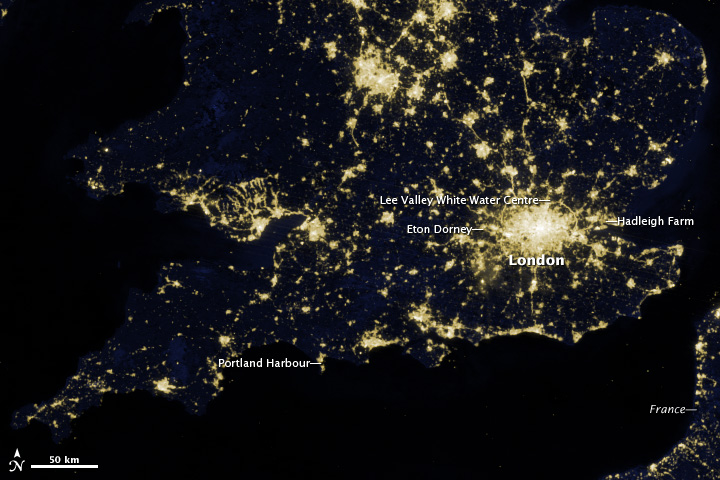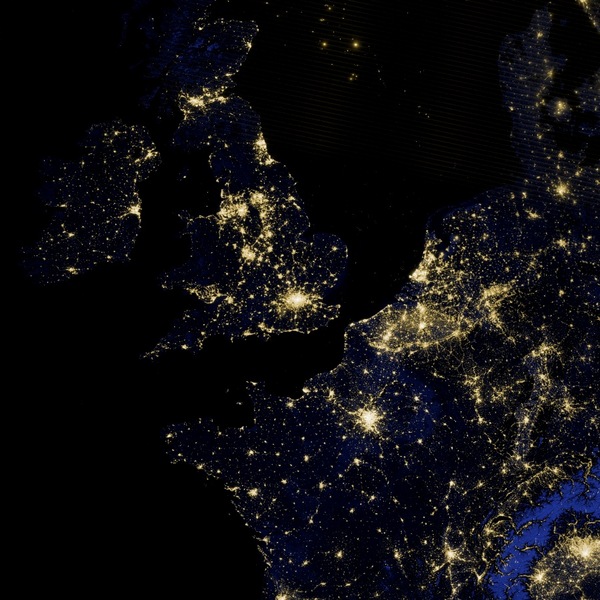Olympic City: London's Lights Seen from Space

None of the billions of people expected to watch the 2012 London Olympics will get a view of London quite like this one, which was captured by the Suomi NPP satellite on the night of March 27, 2012.
The picture was taken using the Visible Infrared Imaging Radiometer Suite (VIIRS), which is more sensitive than other imaging systems to light emitted from the surface, such as reflected moonlight or surface-generated photons like those beamed skyward by human infrastructure and raging wildfires.
While most of the events in the 2012 London Olympics will be held in the greater London area, several other nearby cities and towns will host events, including: canoeing at Lee Valley White Water Center; sailing in Weymouth and Portland; rowing and canoeing at Eton Dorney; and cycling and mountain bike events at Hadleigh Farm.
Most satellite-based cameras require daylight to reflect off Earth's surface and into the detector, forming an image much like a camera, or rely on thermal detection of features, such as cold cloud tops. But not the VIIRS. It has a "day-night band" that allows it to see very dim lights; it can sense light 100,000 times fainter than the conventional visible light sensors, according to a statement from NASA's Earth Observatory.
The day-night capability of VIIRS is primarily intended to capture detailed data about cloud, snow and ice formations during nighttime hours.
Before 1973, pictures of the United States' nighttime lights were classified by the military, but since then, the National Oceanic and Atmospheric Administration has been processing the images to examine population and urbanization changes around the planet, along with helping to pinpoint electrical power blackouts in the United States.
In the large image, the lights in the Irish Sea, the English Channel and the North Sea are likely a blend of fishing vessels and flares from offshore oil and gas platforms.
Get the Space.com Newsletter
Breaking space news, the latest updates on rocket launches, skywatching events and more!

This story was provided by OurAmazingPlanet, a sister site to SPACE.com. Follow OurAmazingPlanet for the latest in Earth science and exploration news on Twitter @OAPlanet. We're also on Facebook and Google+.
Join our Space Forums to keep talking space on the latest missions, night sky and more! And if you have a news tip, correction or comment, let us know at: community@space.com.
OurAmazingPlanet was founded in 2010 by TechMediaNetwork, which owned Space.com at the time. OurAmazingPlanet was dedicated to celebrating Earth and the mysteries still to be answered in its ecosystems, from the top of the world to the bottom of the sea. The website published stories until 2017, and was incorporated into LiveScience's Earth section.










